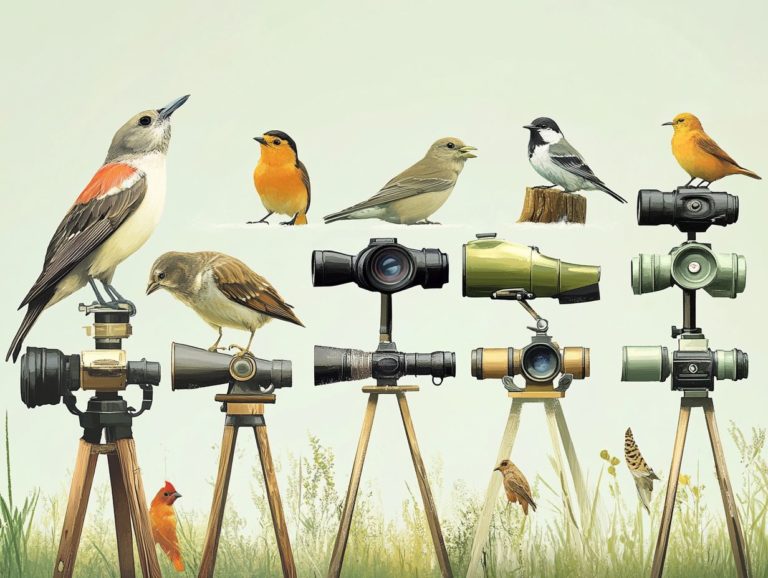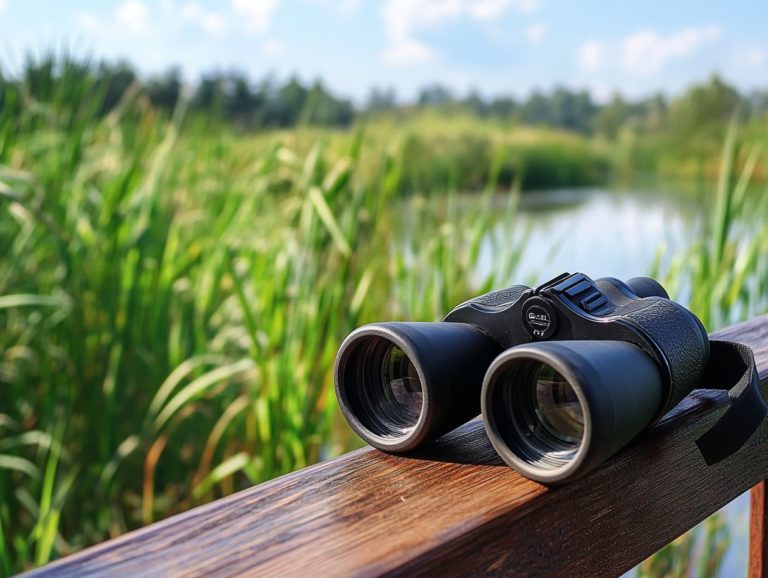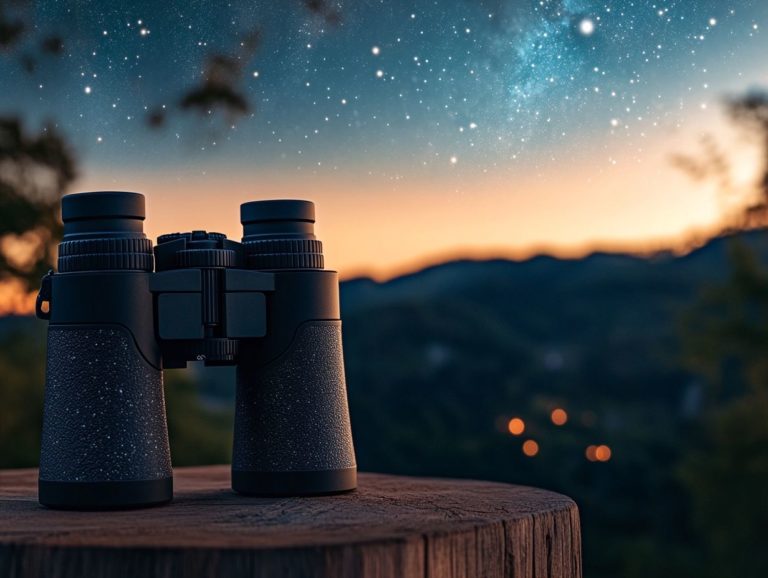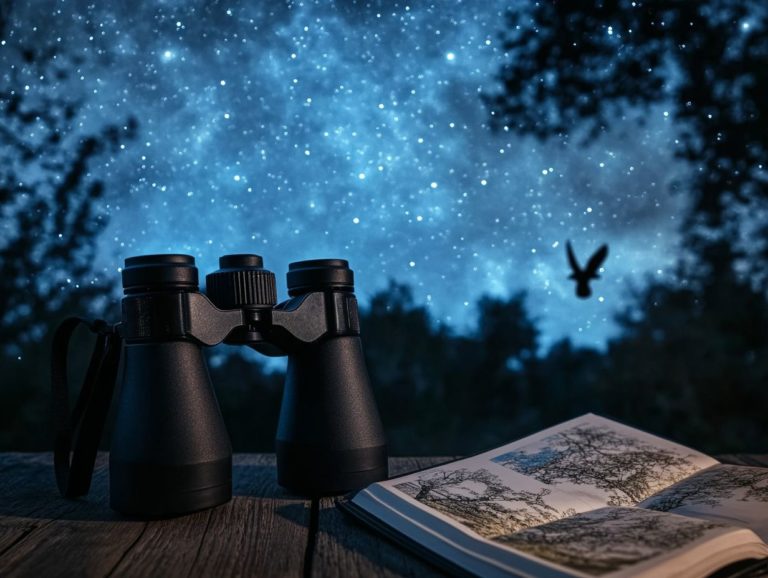Understanding the Importance of Binocular Weight
Binocular weight is integral to your eye health and overall vision. It is often overlooked, but understanding it can change how you experience nature.
This exploration delves into what binocular weight entails and why it holds significance. We will emphasize how imbalances can influence your eyesight.
You ll discover the various environmental and anatomical factors that contribute to binocular weight. You will also learn about the symptoms of imbalance and find effective strategies for measurement and improvement.
By grasping these elements, you can take proactive steps toward enhancing your vision and comfort.
Contents
- Key Takeaways:
- What is Binocular Weight?
- Why Binocular Weight Matters
- Factors that Contribute to Binocular Weight
- Effects of Imbalanced Binocular Weight
- Measuring and Adjusting Binocular Weight
- Tools and Techniques for Assessment
- Strategies for Improving Balance
- Frequently Asked Questions
- What is binocular weight and why is it important to understand?
- How does binocular weight impact the user’s experience?
- What factors contribute to the weight of binoculars?
- Is there an ideal weight for binoculars?
- Are there any drawbacks to choosing lighter binoculars?
- How can I determine the weight of binoculars before purchasing?
Key Takeaways:
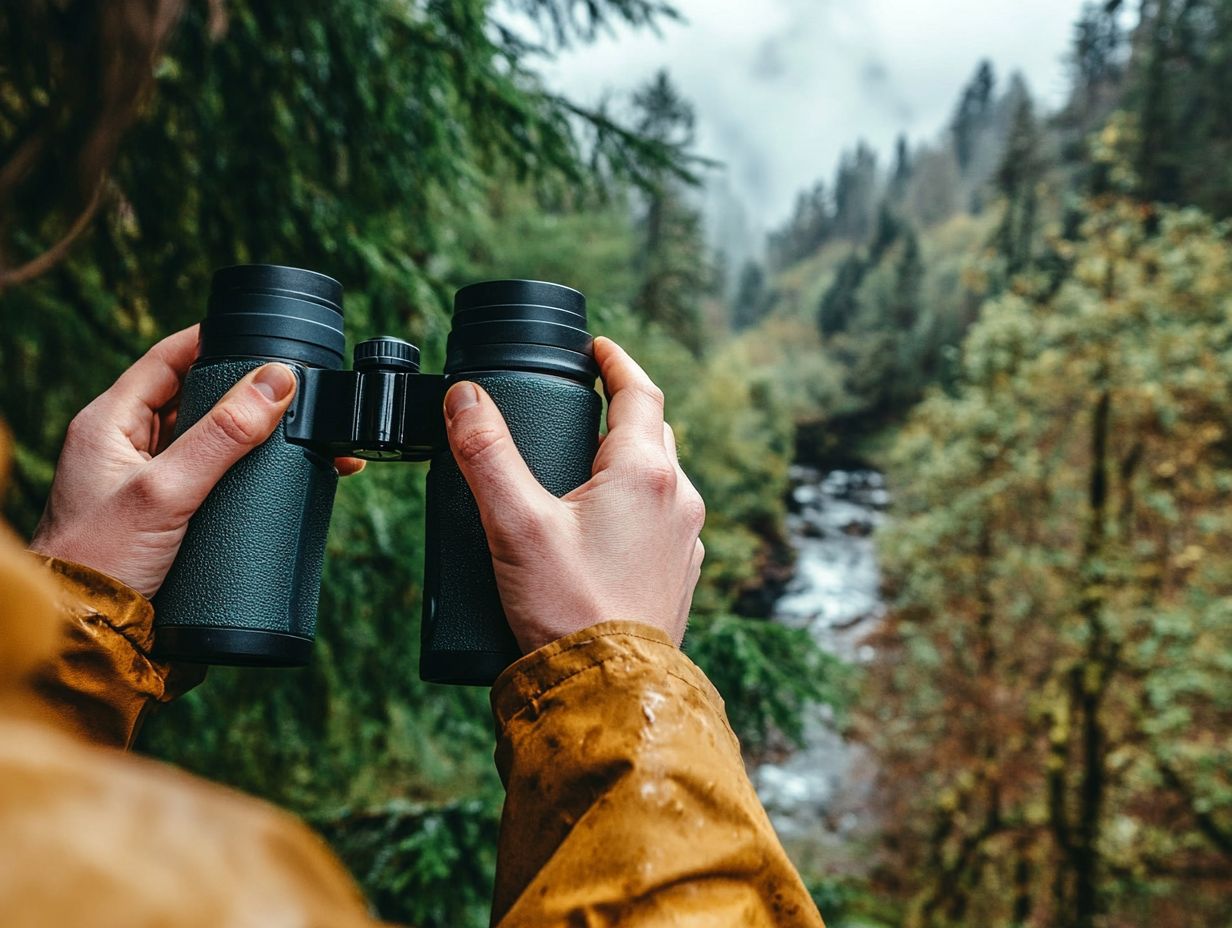
- Understanding binocular weight helps maintain healthy eyes and clear vision.
- Environmental and anatomical factors can cause imbalances, leading to various symptoms.
- Regularly measuring and adjusting binocular weight can enhance balance and prevent vision issues.
What is Binocular Weight?
Binocular weight encompasses the total mass of the binoculars. It can greatly affect your experience during activities like birdwatching.
When comparing popular models, such as the 8×42 and 10×42 configurations, weight can be a deciding factor.
This weight is influenced by various factors, including the materials used in construction, the size of the objective lens, and the inclusion of advanced optics like BAK4 prisms and ED glass.
Grasping the nuances of binocular weight is essential for birders seeking a steady viewing experience without the burden of fatigue. This makes it a critical factor in choosing the perfect pair for your field adventures.
Definition and Explanation
Binocular weight is an essential measurement that reflects the physical heft of the device. This significantly impacts both handling and overall performance during extended observation sessions.
Another important point is how this weight directly relates to how comfortable the binoculars are to hold for long periods. Lighter models tend to be easier to handle, reducing fatigue during prolonged use.
The design features of binoculars, such as adjustable eyepieces, also play a vital role in comfort. They allow you to customize your viewing experience to fit your needs.
In terms of optics, light transmission is crucial, as heavier models typically come with superior-quality glass and advanced multi-coating techniques designed to minimize chromatic aberration.
Ultimately, choosing the right weight ensures that you enjoy an effective and pleasurable viewing experience across various settings.
Why Binocular Weight Matters
The importance of binocular weight plays a crucial role in your hand-held steadiness and overall comfort during birding excursions. Especially during extended observations, opting for lightweight options can significantly reduce fatigue.
When choosing between models such as the Vanguard 10.5×45 Endeavour and the Bushnell 10×42 Legend, you will notice that differences in weight translate directly into variations in usability.
Key factors such as eye relief and the ability to swiftly focus on moving subjects become essential. This makes weight a critical consideration in your selection process.
Impact on Eye Health and Vision
The weight of your binoculars can significantly impact your eye health and vision. Heavier models may lead to discomfort and strain during extended use.
This discomfort often stems from poor posture. You might find yourself leaning or hunching forward to stabilize your arms while using these optical devices.
Such habits not only put unnecessary stress on your neck and shoulders but can also worsen eye strain.
Embracing ergonomic design principles is essential. Lightweight alternatives encourage a more natural posture, promoting better alignment and reducing fatigue.
Selecting binoculars with adjustable eyepieces and ample eye relief enables you to find a comfortable viewing position. This enhances your overall experience by minimizing strain and boosting visual clarity.
Consider choosing lightweight binoculars for a better viewing experience!
Factors that Contribute to Binocular Weight
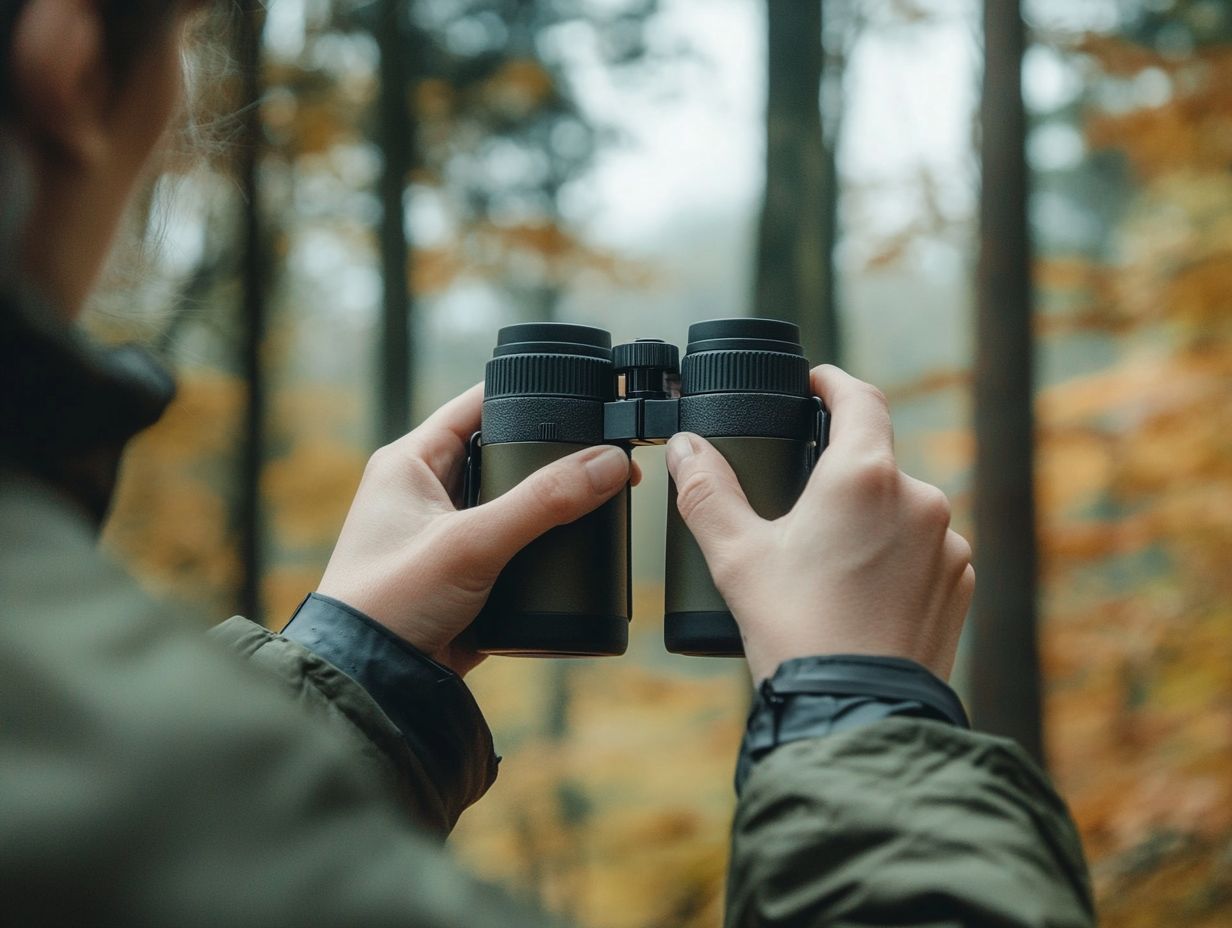
Several factors influence the weight of binoculars. These include the size, the type of the objective lens, the materials used in construction, and the presence of advanced optical elements like BAK4 prisms and Extra-low Dispersion glass.
Environmental Factors
Environmental factors can significantly impact the performance and perceived weight of binoculars. These include humidity, temperature, and the specific conditions of your testing site.
In humid environments, the added moisture can make even the heaviest models feel cumbersome. This complicates extended activities like birdwatching or hiking.
Light transmission is crucial as it dictates how well you can discern details in varying light conditions. This is essential for spotting wildlife at dawn or dusk.
Moreover, waterproofing becomes vital in unpredictable weather. It ensures that you can rely on your binoculars without worrying about damage.
Before you purchase, understand how the shape of binoculars affects usability. This knowledge helps you make informed choices tailored to your adventures.
Anatomical Factors
Anatomical factors can significantly affect how effective and comfortable binoculars are for you. This ultimately shapes your overall viewing experience.
Your inter-pupil distance, or the distance between your eyes, plays a crucial role in how you perceive clarity and magnification of distant objects.
If you have a wider or narrower distance, you might struggle to achieve a satisfactory view. In such cases, adjustable eyepieces provide the necessary flexibility to accommodate your unique anatomy.
Eye relief is particularly important if you wear glasses. It ensures you can enjoy a clear, full-field view without any strain.
Deciding if you need a tripod is crucial. It can enhance your experience during long observation sessions, lessening fatigue and elevating your visual enjoyment.
Effects of Imbalanced Binocular Weight
Imbalanced binocular weight can lead to discomfort, fatigue, and even long-term vision problems during extended birding excursions.
Make sure your binoculars are perfectly balanced! This practice will elevate your birdwatching experience and protect your eyesight.
Common Symptoms and Conditions
Common symptoms associated with imbalanced binocular weight may include eye strain, neck pain, and discomfort during prolonged use.
Such issues can detract from your overall birding experience. If your binoculars aren t properly calibrated, it can be hard to keep them stable, leading to greater physical strain.
The importance of collimation cannot be overstated. It ensures that both optical barrels are aligned, providing clearer images and reducing fatigue.
If the ergonomic design of your binoculars is lacking, uneven weight distribution can stress your neck and shoulders.
These factors don t just lead to discomfort; they can pave the way for potential long-term physical issues. Choose binoculars that are well-balanced and ergonomically suited to your needs.
Measuring and Adjusting Binocular Weight
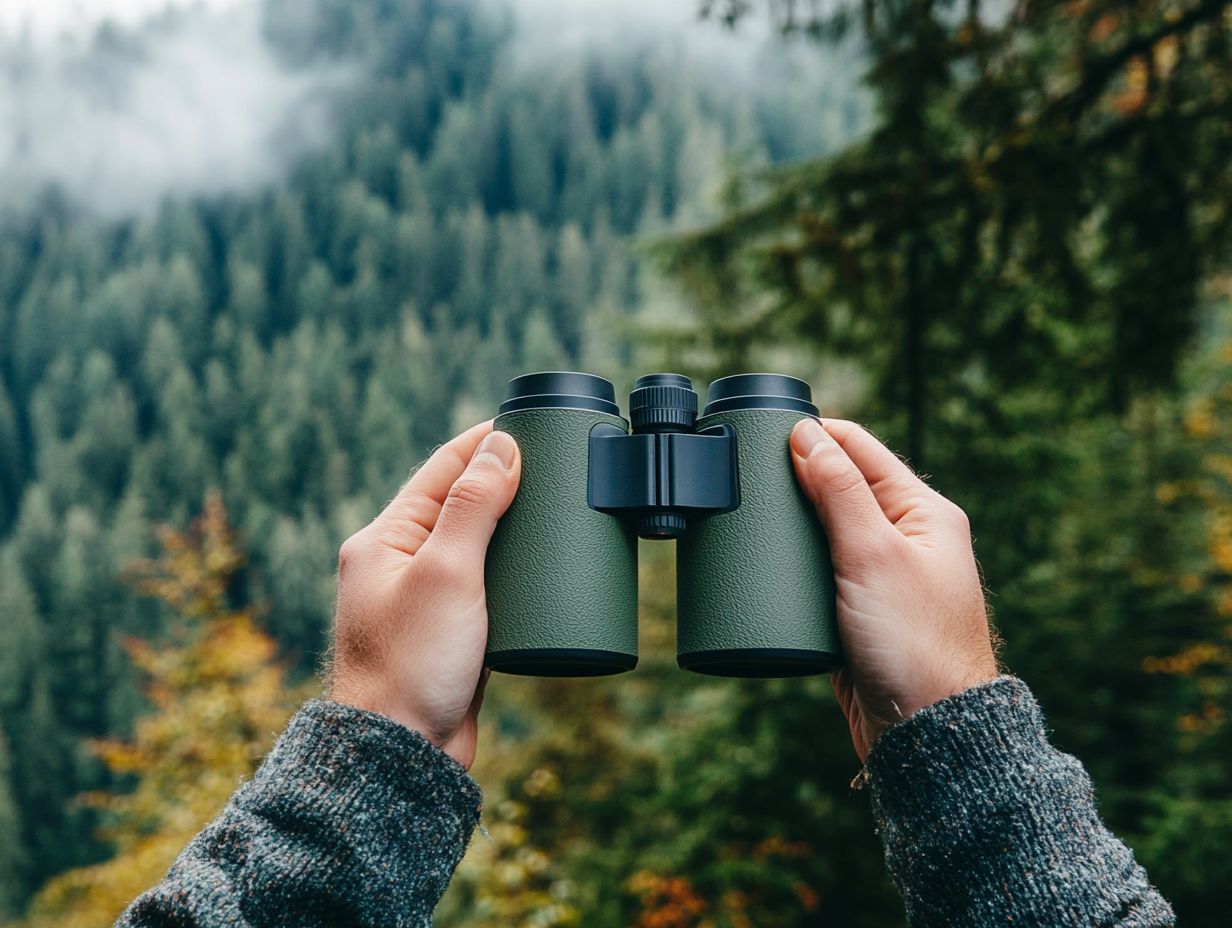
Measuring and adjusting binocular weight is essential for birders like you. It ensures optimal performance and comfort by using the right tools and techniques.
This approach can truly enhance your viewing experience.
Tools and Techniques for Assessment
Several tools and techniques are at your disposal for effectively assessing binocular weight, guiding you toward the perfect model for your birding endeavors.
For instance, using a simple digital scale can give you a precise measurement, ensuring that you select binoculars that won’t weigh you down during those marathon observation sessions.
Evaluating comfort and design is equally important; pay attention to features like grip design and weight distribution to guarantee comfort throughout your long viewing adventures.
When you dive into the specifications, don t overlook collimation, which refers to the alignment of the lenses to ensure a clear image. Consider the exit pupil diameter. This measurement significantly impacts light transmission and image brightness.
By taking these factors into account, you ll be enabled to make an informed decision that aligns functionality with your personal preferences.
Strategies for Improving Balance
Implementing effective strategies to improve balance in your binoculars can significantly enhance your comfort, making your birding experience far more enjoyable and free from the fatigue that often accompanies imbalanced weight.
Choosing the right model based on comfort and design is vital; a well-designed grip can greatly reduce strain during those long observation sessions you cherish.
Utilizing stabilizing accessories, such as harnesses or tripods, will help you maintain steadiness, ensuring clearer views even when you’re working with high magnifications.
When you’re in the market for equipment, considering options like zoom binoculars or fully multi-coated lenses can elevate your experience even further, placing a premium on both clarity and stability. By adopting these strategies, you can fully immerse yourself in nature while minimizing any discomfort.
Frequently Asked Questions
What is binocular weight and why is it important to understand?
Binocular weight refers to the combined weight of both lenses in a pair of binoculars. It is important to understand because it can affect the comfort and usability of the binoculars, especially during extended use.
How does binocular weight impact the user’s experience?
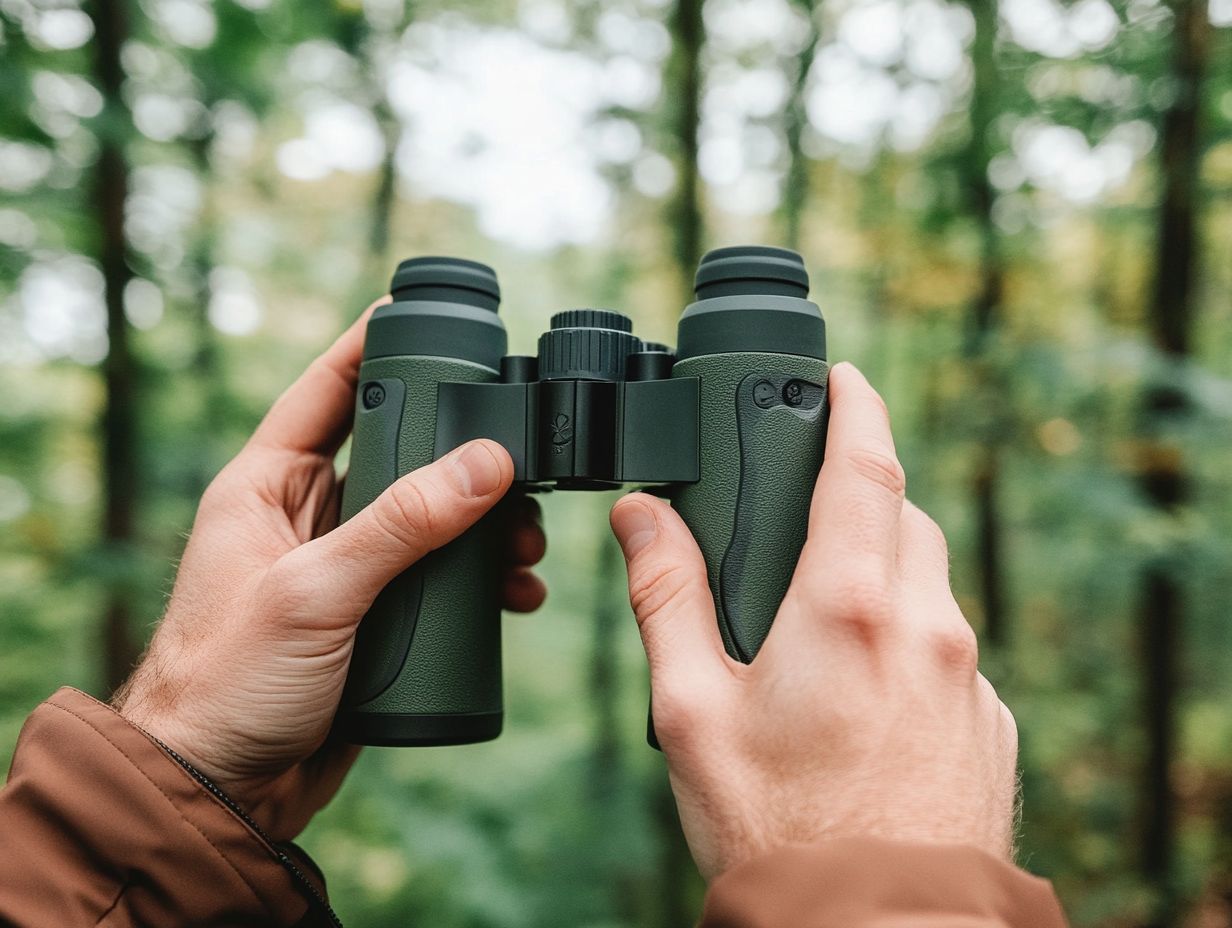
The weight of the binoculars can affect the user’s comfort, stability, and ability to hold the binoculars steady. A heavier weight may cause strain on the arms and neck, while a lighter weight may be easier to handle for longer periods of time.
What factors contribute to the weight of binoculars?
The weight of binoculars can be influenced by various factors such as the size and material of the lenses, the type of construction, and any additional features such as image stabilization technology or rubber armor coating.
Is there an ideal weight for binoculars?
There is no one-size-fits-all answer to this question as it ultimately depends on personal preference and intended use. However, a general rule of thumb is that a lighter weight is preferred for activities such as bird watching or hiking, while a slightly heavier weight may be better for stargazing or use on a tripod.
Are there any drawbacks to choosing lighter binoculars?
While lighter binoculars may be more comfortable for extended use, they may not be as durable as heavier ones. Additionally, they may not have as many features or advanced technologies, which could affect the overall viewing experience.
How can I determine the weight of binoculars before purchasing?
Most manufacturers provide the weight of their binocular models in the product specifications. It is also helpful to try holding the binoculars in person and simulate using them for an extended period to get a better feel for the weight.
Act now to elevate your birding experience by exploring different binocular options!

